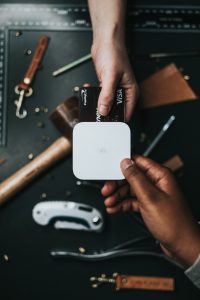Forex, or foreign exchange, is the largest financial market in the world with a daily turnover of over $5 trillion. It offers an opportunity for individuals to trade currencies from around the world and potentially profit from fluctuations in exchange rates. However, diving into the world of forex trading can be overwhelming for beginners. In this article, we will provide a step-by-step guide on how to begin in forex.
Step 1: Educate Yourself
Before investing in the forex market, it is crucial to educate yourself on the basics of forex trading. This includes understanding the terminology, the different types of currency pairs, and the factors that influence exchange rates. You can find a wealth of information on forex trading online, including tutorials, blogs, and forums.
One of the best ways to educate yourself is to open a demo trading account. This allows you to practice trading without risking any real money. Most brokerages offer demo accounts that simulate the live trading environment.
Step 2: Choose a Broker
Once you have a basic understanding of forex trading, it’s time to choose a broker. A broker acts as an intermediary between you and the forex market, allowing you to buy and sell currencies. When choosing a broker, there are several factors to consider, including:
– Regulation: Make sure the broker is regulated by a reputable regulatory body, such as the Financial Conduct Authority (FCA) in the UK, the National Futures Association (NFA) in the US, or the Australian Securities and Investments Commission (ASIC) in Australia.
– Trading Platform: Check if the broker offers a user-friendly trading platform with advanced features such as charting tools, technical indicators, and automated trading.
– Fees and Spreads: Look for a broker with competitive spreads and low commissions. Some brokers charge a fixed fee per trade, while others charge a percentage of the spread.
– Deposit and Withdrawal Options: Check if the broker offers a variety of deposit and withdrawal options, including credit/debit card, bank transfer, and e-wallets.
Step 3: Create a Trading Plan
Before placing any trades, it’s essential to create a trading plan. A trading plan outlines your goals, risk tolerance, and trading strategy. It should include:
– Your trading objectives: What do you hope to achieve by trading forex? Are you looking to generate a steady income or make a quick profit?
– Your risk tolerance: How much are you willing to risk per trade? Are you comfortable with a high-risk, high-reward strategy, or do you prefer a more conservative approach?
– Your trading strategy: What method will you use to analyze the market and make trading decisions? Will you rely on technical analysis, fundamental analysis, or a combination of both?
– Your money management plan: How will you manage your funds? Will you use a fixed lot size or a percentage of your account balance per trade?
Step 4: Start Trading
Once you have a trading plan in place, it’s time to start trading. Begin with small trades and gradually increase your position size as you gain experience and confidence. It’s essential to stay disciplined and stick to your trading plan, even in times of market volatility.
One of the most important aspects of successful forex trading is risk management. Always use stop-loss orders to limit your losses and protect your capital. It’s also crucial to avoid overtrading and to never risk more than you can afford to lose.
In conclusion, forex trading can be a rewarding and profitable venture for those willing to put in the time and effort to learn the basics and develop a sound trading plan. By following these steps, you can begin your journey in forex trading with confidence and increase your chances of success.





